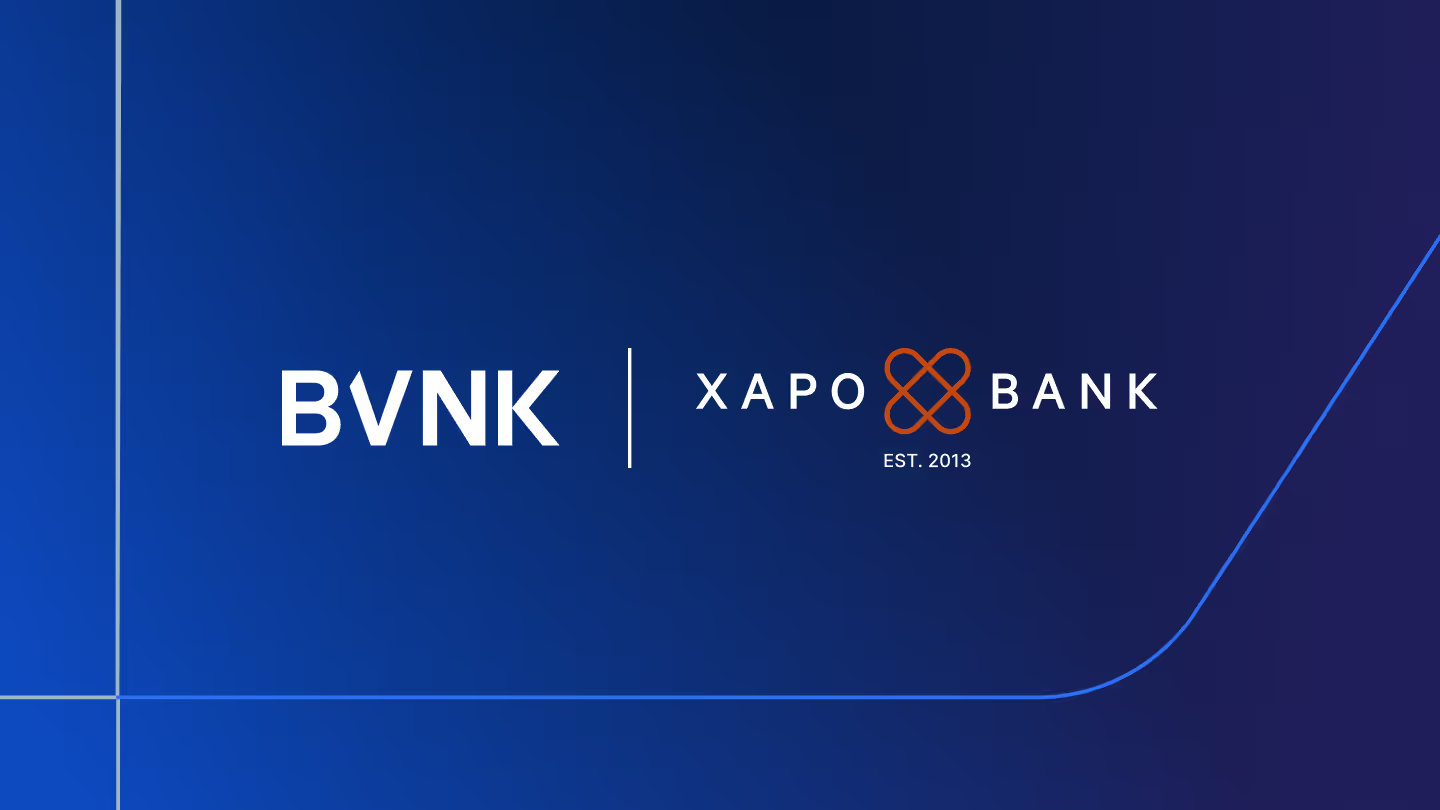Upgrading payments infrastructure with stablecoins and CBCDs
Leaders from Worldpay, PayPal Ventures, FIS and BVNK debated the opportunities, use cases and barriers of stablecoins for fintechs at Currency LDN 2024.

Rethinking global money movement creates new opportunities for fintechs. BVNK Co-founder Chris Harmse, spoke to three payments leaders at Currency LDN 2024, to get their take on the real-world use cases for stablecoins and central bank digital currencies (CBDCs).
Julia Demidova, Head of CBDCs and Digital Currencies at FIS, shared examples of the work FIS is doing with financial institutions, banks and governments to test and launch regulated forms of digital money.
Caitlin Kulakowski, Director – Crypto at Worldpay, talked through the payment processor's journey with crypto from its first experiments settling merchants in stablecoins and an extended pilot with Visa, to new plans to build consumer payouts.
Ashish Aggarwal, Partner at PayPal Ventures, gave his perspective on stablecoin use cases, what’s driving adoption, as well as the challenges fintechs face.
Catch the highlights and read the summary below, or view the full session on demand.
The starting point for fintechs is often B2B
Worldpay has been involved in the crypto space for the past decade: initially, as a payment processor for crypto firms. When Coinbase first launched debit cards in Europe in 2019, Worldpay supported them.
“Fast forward five years, and we've really doubled down,” said Caitlin Kulakowski, Director - Crypto at Worldpay. “We’re facilitating global expansion for our crypto merchants on the card processing side… settling them in stablecoins was a natural progression.”
In 2022, Worldpay began offering merchants a portion of their settlements in USDC stablecoins. This year, the acquirer has also completed its stablecoin pilot with Visa to get merchants their funds even faster, by cutting out another step of the process. Caitlin explained: “Visa sends USDC to Worldpay's wallet and we pass it on to the merchant, without having a minting process in between.”
Both projects have proven themselves, added Caitlin: “We're seeing great returns in terms of merchants who want this because they don't have bank account access, they want their funds faster, or they want cheaper cross-border fees.”
Worldpay is now looking at other enhancements, including settling merchants in stablecoins 7 days a week and settling businesses outside of the crypto-native space.
Consumer payouts are broadening the appeal of stablecoins
Bringing stablecoins to consumers is a newer use case, but it has piqued the interest of businesses who may have been “timid initially to get involved in crypto,” said Caitlin, “opening the door for stablecoins to be used by non crypto-native merchants.”
Caitlin gave the example of merchants like Etsy and Airbnb: “They may have sellers and hosts globally, in places where there is currency volatility or where they just can’t get access to banking... we’re offering them the ability to pay out in USDC.”
BVNK Cofounder Chris Harmse added: “We’ve seen that our fintech partners often start with a B2B use case, as Worldpay did, driven by merchant demand. As they get comfortable with the infrastructure, they’re looking at how to enable consumer use cases like one-way remittance into emerging markets or B2C payouts for gig economy platforms.”
Regulated stablecoins have unleashed new use cases for financial institutions
Use cases for financial institutions are developing along a different path, explained Julia Demidova, Head of CBDCs and Digital Currencies at FIS: “The MiCA regulation which comes into effect next month means that commercial banks, e-money institutions and credit institutions in Europe can all become issuers of regulated stablecoins. It’s a great opportunity to tackle use cases like interbank transfers or cross-border payments, which could really enhance how money moves.”
FIS is working with central banks in Europe and beyond to help them become issuers, including in the Middle East where stablecoin regulation is in the works. Meanwhile hundreds of central banks are also developing their own central bank digital currencies (CBDCs). Julia and the FIS team are supporting many of them in testing and bringing offline currencies into production.
Julia explained: “With public ledgers there are some bottlenecks at the moment. Payment volumes will only increase over the next few years, so central banks need to make sure they have a ledger that will support high transaction volumes. We’ve done a lot of testing on performance and have demonstrated that we can deliver one million transactions per second, with instant finality.”
Adverse regulation is a risk, particularly in emerging markets
With crypto regulation evolving all the time, there is lingering risk for fintechs, said Ashish Aggarwal, Partner at PayPal Ventures: that governments may regulate in a way that restricts digital currencies.
“There can be a perception among some authorities, with an element of reality to it, that with stablecoins, ‘I lose control over my currency, over money movement in and out for my citizens’… That's a known risk, but we don't know if or how it will play out. The only mitigant is to build transparent and open relationships with regulators, informing them how you're thinking, taking them on the journey so they’re not caught off-guard.” It might be possible to fly under the radar in the short-term added Ashish, but it’s not a feasible strategy for any fintech that “wants to be scalable”.
Despite these risks, many governments in emerging markets are embracing digital currencies. In smaller economies, stablecoins backed by central bank reserves might be favoured over CBDCs, added Julia Demidova, “because they’re less costly than launching a full end-to-end CBDC solution”.
We’re likely to see very different approaches, Julia added: “Central banks all have their own objectives for digital currencies … they might favour a CBDC, a stablecoin, or decide against both and just allow commercial banks to tokenize their deposits.”
Fintechs: start with why and be fearless

In the last seven years, PayPal Ventures has invested $800 million in 80+ fintech and crypto startups. Fintechs looking at stablecoins should always start with the problem they’re solving, said Ashish Aggarwal: “If you take a step back, why is that payment being made?… It could be me sending money to my family in India, or buying from a merchant online. In those scenarios – what do you want? Speed, low cost, no fraud.”
The choice of payment rail will likely be different depending on the use case, added Ashish. “It’s a Swiss knife approach… as a payment processor, you say to merchants: we can offer you all the traditional rails for the use cases where they work, and for the corridors or use cases where they don’t, for example in emerging markets where there are challenges around dollar shortages, we can help mitigate that with stablecoins. But in the end, you get your money faster, at lower cost, with no fraud. That's what merchants care about.”
Once you’re clear on your use case and audience, the most important thing is for fintechs to “be fearless,” added FIS’ Julia Demidova: “You need a very good understanding of what you're trying to solve, for who, and the commercial model for it... and you have to believe in what you're doing. If you’re driving for financial inclusion for example, that should be your goal, or if you want to reduce the cost of banking, that should be your focus. Then, you need to be fearless, and embrace regulation and compliance.”
Bank relationships and licensing remain critical
For fintechs looking to build products with stablecoins, banking and licensing are often the biggest hurdles, added Worldpay’s Caitlin Kulakowski: “With licensing, you need to understand what you have and what you need in order to process in the countries where you want to process. Secondly, to get money on the blockchain, you need a banking relationship, and right now some banks are still a bit risk-averse. It’s important to have a clear approach across both these areas, and to lean on partners like BVNK to take some of the regulatory lift off of your shoulders.... working with the right partner can help set you up for success.”
This discussion took place at Currency LDN 2024. Watch the full session on demand.
Latest news
View allGet payment insights straight to your inbox



.jpg)







.avif)


.jpg)





